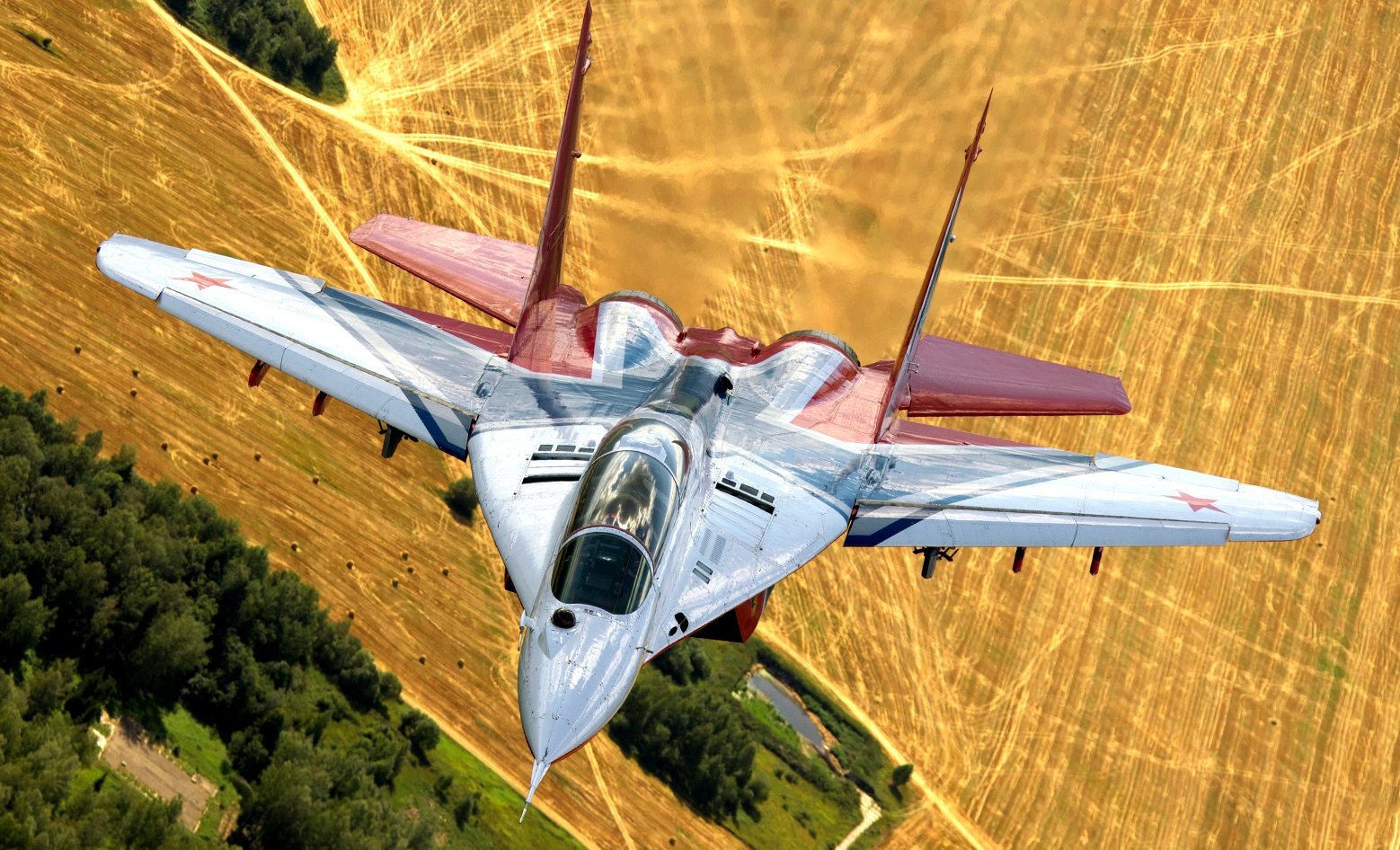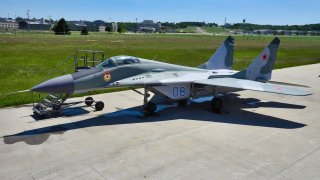MiG-29: The Russian Fighter Jet The Air Force Feared (and Purchased)
The MiG-29 was developed in the 1970s to counter the then-new United States fighters, such as the McDonnell Douglas F-15 Eagle and the General Dynamics F-16 Fighting Falcon. It entered service with the Soviet Air Forces in 1983.
Five Facts About the Mikoyan MiG-29 - Developed by the Soviet Union in response to increasingly sophisticated Western warplanes, the Mikoyan MiG-29 (NATO reporting name "Fulcrum") has established a formidable reputation as an agile dogfighter. It further entered service as a lightweight counterpart to the heavyweight Sukhoi Su-27 (NATO reporting name "Flanker").
Though it traced its roots back to a design for a heavy fighter, it was scaled down to meet a requirement for a "frontal" fighter that could primarily serve in a short-range air defense role, but have a secondary role as a ground-attack aircraft.
Here are some key facts about the Mikoyan MiG-29:
Keeping Up With the U.S. Air Force
The MiG-29 was developed in the 1970s to counter the then-new United States fighters such as the McDonnell Douglas F-15 Eagle and the General Dynamics F-16 Fighting Falcon. It entered service with the Soviet Air Forces in 1983.
The twin-engine fighter aircraft was developed by the Mikoyan Design Bureau as an air superiority fighter. More than 1,600 were produced, and the MiG-29 proved to be one of the most capable fourth-generation fighter aircraft.
Truly Lightweight and Maneuverable
The MiG-29 was one of the first Soviet aircraft designs to extensively use lightweight aluminum-titanium alloys, reducing overall weight and complexity. In addition, as part of the high-lift, low-drag design ethnos that its designers called for, the MiG-29 employs a widely flared wing leading edge root extension, while the intakes for the widely spaced engines are also optimized for high angle-of-attack capability.
The leading edge of the wing is also fitted with full-span maneuvering flaps that are computer-controlled, and the trailing edge is outfitted with plain flaps inboard and ailerons outboard. The twin canted tailfins are noted for being combined with all-moving horizontal tail surfaces.
During the 1980s, Mikoyan had ambitious plans for a second-generation MiG-29 employing an all-new airframe design. This took the form of the land-based 9.15 MiG-29M and the carrier-based 9.31 MiG-29K. However, post-Cold War funding cuts saw these programs abandoned in the early 1990s.
The MiG-29 Was Widely Exported
Export models of the Fulcrum were also sold to East Germany, India, Iran, Iraq, Libya, Peru, Poland, Syria, Sudan, and Yugoslavia. The latest variants are based on the navalized MiG-29K and MiG-29KUB developed for the Indian Navy.
The land-based equivalents are the MiG-29M/M2 variants, and all feature open architecture avionics, Zhuk-ME radar with a slotted planar array, and new RD-33MK engines with full-authority digital engine controls (FADEC).
Poland Bought Nearly Two Dozen MiG-29s for Less Than $30!
Even after becoming a NATO member, Poland continued to operate the MiG-29. Following the withdrawal of service from the German Luftwaffe, Warsaw obtained twenty-two former East German aircraft – eighteen MiG-29Gs and four MiG-29GTs – for a symbolic euro each.
An additional ten surplus MiG-29s were purchased from the Czech Republic, and in order to operate the aircraft within NATO, Poland's aircraft were upgraded with a new digital databus with open architecture, a cockpit employing imperial units of measurement, a laser inertial platform with embedded CPS and INS, digital video recorder and data transfer system. The MiG-29s have also received an up-front control panel, a new UHF/VHF radio, an upgraded IRST sensor, and a modernized NO19 radar with increased target detection and tracking range.
The U.S. MiG-29s
An unlikely operator of the MiG-29s has been the United States, which first had an opportunity to face-to-face with an aircraft that could have encountered had the Cold War gone another direction. U.S. pilots were even able to experience the former East German MiG-29 Fulcrums in aerial exercises and quickly discovered that in short-range dogfights fought at low speeds, the MiG-29 demonstrated agility that they could not match with their respective aircraft.
Following the dissolution of the Soviet Union in late 1991, it also became clear that an emergency situation was dangerously close. Some 30,000 nuclear weapons and a vast arms production complex were spread over four sovereign states.
This led to the Nunn–Lugar Cooperative Threat Reduction (CTR) program that sought to secure and dismantle weapons of mass destruction. Ukraine, Belarus, and Kazakhstan became "nuclear weapons free" because of this program, but Congress also provided funds to the Department of Defense to help ensure that nuclear weapons or those capable of carrying nuclear armament couldn't end up in the wrong hands.
In November 1997, the United States used CTR funds to purchase twenty-one nuclear-capable MiG-29 aircraft from the Republic of Moldova – which had been part of the former Soviet Union. The United States had feared that Moldova might sell these MiG-29 aircraft to a nation seeking nuclear delivery capabilities – notably Iran. This came about after Moldovan authorities had informed Washington that the Islamic Republic had expressed interest in the aircraft.
Iran was already an operator of the MiG-29, but the Clinton administration feared the modernized MiG-29C variants possessed by Moldova could be used for the delivery of nuclear weapons. The United States moved forward with a deal to acquire the aircraft instead and paid $40 million along with humanitarian assistance that included non-lethal defense equipment such as trucks.

In late 1997, the twenty-one MiG-29s – including fourteen MiG-29Cs – were delivered to the National Air and Space Intelligence Center (NASIC) at Wright-Patterson Air Force Base (AFB) in Ohio. Exactly how the MiG-29s were used isn't as clear, but most were probably scrapped.
Author Experience and Expertise
Peter Suciu is a Michigan-based writer. He has contributed to more than four dozen magazines, newspapers, and websites with over 3,200 published pieces over a twenty-year career in journalism. He regularly writes about military hardware, firearms history, cybersecurity, politics, and international affairs. Peter is also a Contributing Writer for Forbes and Clearance Jobs. You can follow him on Twitter: @PeterSuciu.
Main image is from Shutterstock. Intext image is from Creative Commons.


